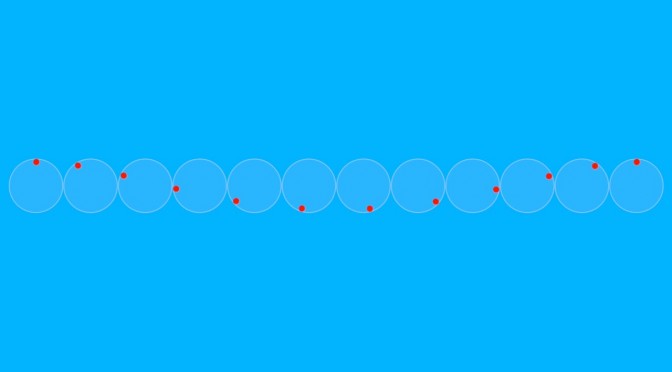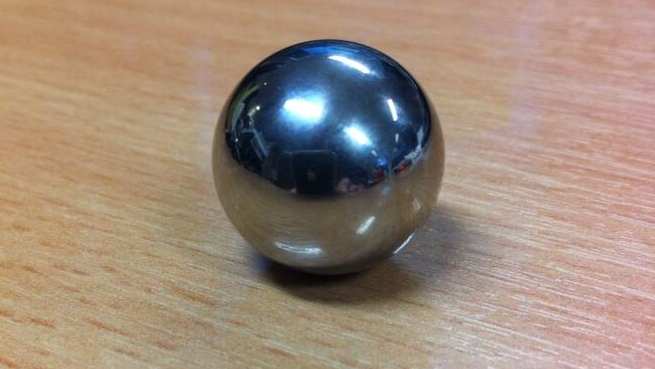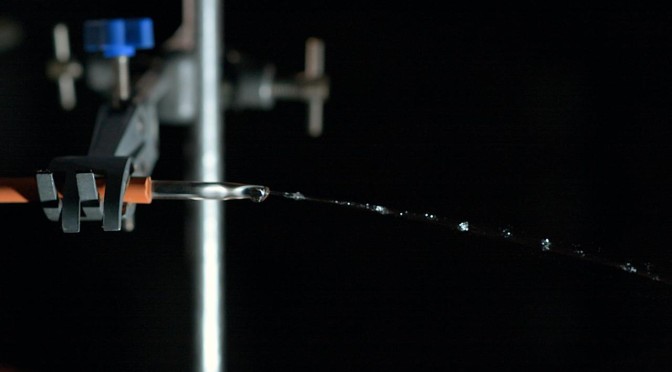I threw this together last night to try out an arrangement for a practical demo Elin is planning to build for a new show at the Centre for Life. I thought it might find wider use than just us sitting on the sofa saying “Coo!”. To be fair, it already has found wider use: Rosy from Cambridge Science Centre is staying with us, and was also saying “Coo!”.
One of the things that’s rather hard to wrap your head around when looking at waves in water is that the individual bits of water don’t translate with the wave propagation. Which rather obviously has to be the case once you realise you’ve been staring at the waves coming towards you for quite some time and yet the sea (tides permitting) hasn’t swept you away. Nevertheless, it’s one of those situations where a diagram helps, and an animated diagram helps a lot.
So here’s that animated diagram. For anyone who cares about such things, I built this in Apple Motion: it’s one (rotating) object, replicated with a rotation shift, which makes it very easy to play with different arrangements. It’s particularly interesting when the movement discs overlap. Maybe I’ll build another animation of that…
Anyway, you’re welcome to use the clip, though you’ll want to download and use this high-definition version (3Mb .mov, right-click and ’Save target as…’, and all that). It should loop smoothly enough.




